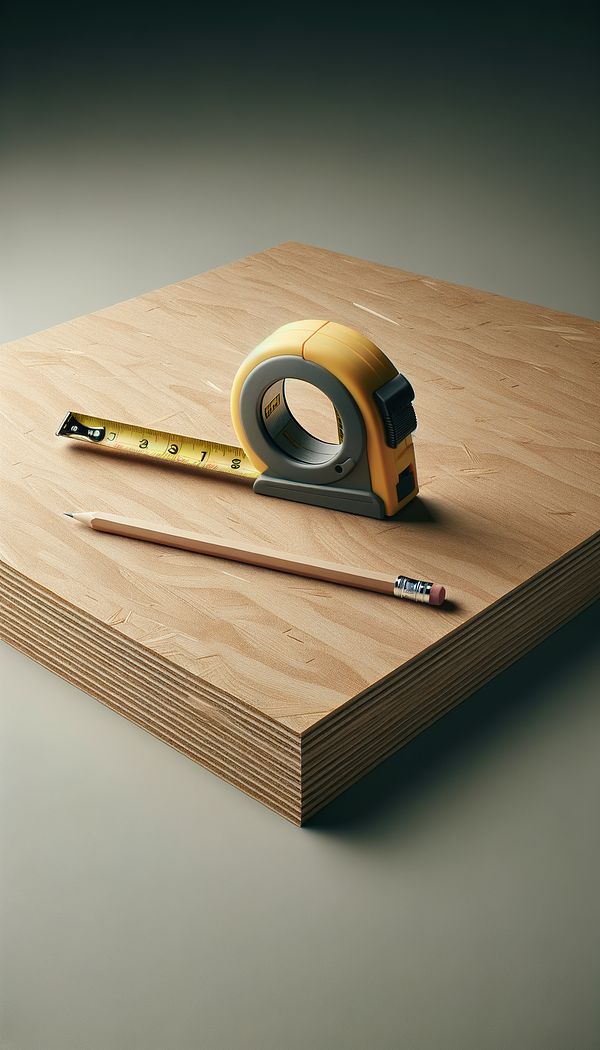What is Fiberboard?
Fiberboard is a type of engineered wood product made by bonding together wood fibers under heat and pressure.
Description
Fiberboard is an engineered wood product that combines wood fibers with a bonding agent under heat and pressure to create a versatile and durable material. This process allows for the production of a wide range of products, from sheets used in furniture and cabinetry, to soundproofing materials and backing for flooring. There are different types of fiberboard, including medium density fiberboard (MDF), high density fiberboard (HDF), and low density fiberboard (LDF), each with its own specific uses and benefits. MDF, for example, is widely used in the interior design and construction industries for its smooth surface, which makes it ideal for painting or applying veneers. HDF is often used where higher strength and density are needed, such as in flooring underlayments.
The flexibility of fiberboard in terms of density and size makes it a popular choice among designers and manufacturers. It can be cut, drilled, and machined much like solid wood, but often comes at a lower cost and with greater uniformity. This makes it particularly attractive for use in modern and contemporary designs where clean lines and smooth surfaces are desired. However, it's important to note that while fiberboard is durable, it is not as resilient to moisture as some other materials, which can limit its use in certain applications.
Usage
Fiberboard is commonly used in the manufacturing of furniture, cabinets, and doors due to its smooth finish and ease of customization. It is also employed in the creation of decorative panels, shelving units, and as a substrate for veneers. Its application extends to the construction industry, where it is used as an underlayment for different types of flooring, in soundproofing solutions, and in temporary structures.
FAQs
-
Is fiberboard environmentally friendly?
The environmental impact of fiberboard varies depending on the type and the manufacturing process. Products made from recycled wood fibers and those bonded with eco-friendly adhesives are considered more sustainable. However, concerns remain over the use of formaldehyde-based glues in some fiberboards, though stricter regulations have led to reduced emissions and safer products.
-
Can fiberboard be used in outdoor applications?
Fiberboard is generally not suitable for outdoor use due to its sensitivity to moisture, unless it has been specifically treated or coated to resist water damage. For outdoor applications, alternatives such as treated wood, plastic lumber, or waterproof engineered wood products are recommended.
-
How do you care for and maintain fiberboard furniture?
To maintain fiberboard furniture, it's important to protect it from moisture and excessive heat. Use coasters, placemats, or pads to safeguard surfaces against spills and heat sources. Wipe spills immediately with a dry cloth, and use mild cleaners specifically designed for wood products. Avoid using excessive water or abrasive cleaning tools, which can damage the surface.
Practical Application
When considering fiberboard for your next project, think about the product's specific application and its environment. For areas prone to moisture, such as bathrooms or kitchens, look for fiberboard products that have been specially treated for water resistance. If you're working on a piece of furniture or an interior detail that will be painted, medium density fiberboard (MDF) can provide a smooth, uniform surface that takes paint well. Always check the material's specifications and recommended uses to ensure it matches your project's requirements.
-
Materials & Textiles360 articles
-
Furniture Types599 articles
-
Construction & Building86 articles
-
Decorative Objects240 articles
-
Wall Treatments & Finishes157 articles
-
BuffetA buffet is a long, low piece of furniture designed for storage and serving food.
-
FootboardA footboard is a decorative or functional panel at the foot of a bed.
-
Inset TileInset tile is a tile design technique used to create patterns or visual interest by embedding tiles of different colors, materials, or shapes within a larger tiled area.
-
Bunk BedA bunk bed is a type of bed in which one bed frame is stacked on top of another, allowing two or more beds to occupy the floor space usually required by just one.
-
EyeletA small hole with reinforced stitching or metal surrounding it, used for decoration or functionality in fabrics.
